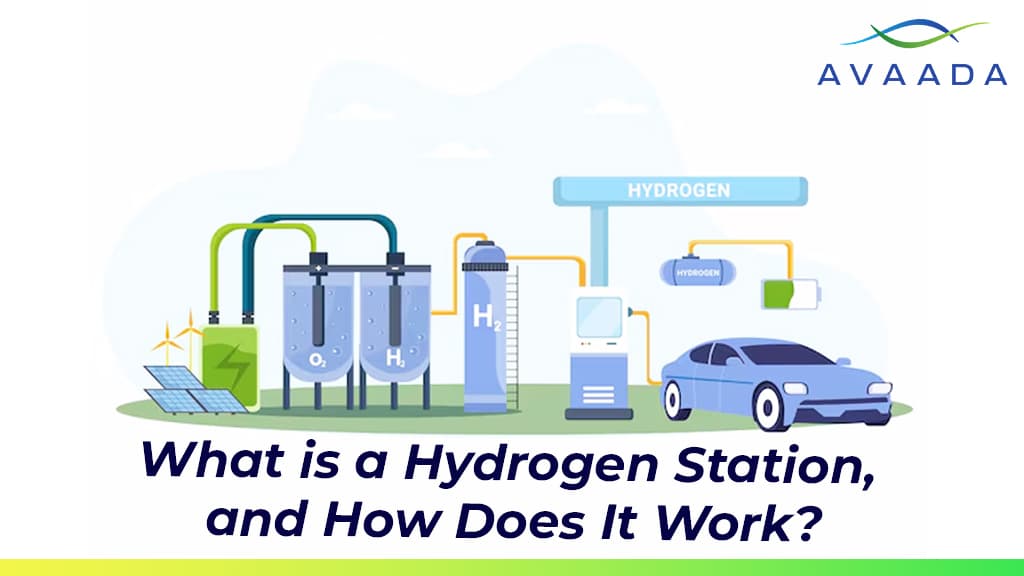Hydrogen fuel is fast becoming the word in town as the world keeps on gravitating to cleaner, greener sources of energy. With the prospect of zero-carbon fueling of vehicles, homesteads, and industries alike, this is one of those game changers as the world goes about hunting for a greener future. But how does one harness that power, and where does one refuel? Enter the hydrogen station: critical infrastructure that will help enable the widespread adoption of hydrogen-powered vehicles. The article now explains what hydrogen stations are, how they work, and why they will be so important in the future of green hydrogen.
What is a Hydrogen Station?
Fundamentally, a hydrogen station is one of the refueling stations that provide compressed hydrogen gas for fuel cell vehicles to generate electricity to power the motor of the vehicle. Hydrogen stations provide fuel much in the way conventional filling stations do, providing either petrol or diesel. Facilities of this nature are needed increasingly so as to help grow the numbers of hydrogen-powered vehicle fleets, and they have great potential to dramatically reduce the carbon footprint of transport at least for those vehicles using them.
For a deeper understanding of green hydrogen and its core principles, explore our comprehensive guide on Green Hydrogen.
How Do Hydrogen Stations Work?
Hydrogen stations have a more complex structure than the typical gas station, due to the unique properties of hydrogen itself and the technologies involved in its safe storage and distribution. The general concept of a hydrogen station would look something like this:
How Do Hydrogen Stations Work?
Hydrogen Production: This may be by the following:
Electrolysis is the process in which water H₂O is divided into hydrogen H₂ and oxygen O₂, using electric energy. If such electricity comes from renewable sources, then it can also be termed as green hydrogen, sourced either from solar or wind.
Steam Methane Reforming: It is the most deployed process in the world at the moment. Hydrogen is taken out from natural gas. This process, however, is an emitter of CO₂ and not as environment-friendly in nature as compared to electrolysis.
Biomass gasification: Organic material such as wood and agricultural waste gets transformed into hydrogen. This, through its own argument, may be considered more sustainable than SMR.
Storage: Hydrogen, after production, is stored at high pressure. Commonly, each and every hydrogen station would have storage tanks with hydrogen stored at pressure ranging between 350 to 700 bar or 5,000 to 10,000 psi. Due to its very low density, hydrogen has to be compressed up to a very high degree in order to fit into manageable-sized storage tanks so that it can be efficiently dispensed to the vehicles.
Cooling and Compression: Before distribution, hydrogen is compressed and then cooled before distribution. Compression puts the hydrogen at the right pressure for refueling into the vehicles, while cooling lowers the temperature that the compression creates. This stage is very critical in avoiding overheating during refuel, which may affect the integrity of the fuel tank.
Dispensing: It enables hydrogen to be dispensed into the vehicle’s tank through a specially designed nozzle fitted properly and securely in a particular fitting into the vehicle’s fuel receptacle. Refueling would take approximately a couple of minutes, which is just like how filling up with petrol or diesel would work. The safety measures will ensure that the hydrogen is cleared of any leakage and/or risks for the explosion, hence making this process safe and efficient.
Discover how green hydrogen is revolutionizing industries and shaping the future of clean energy in our comprehensive guide on What Green Hydrogen is Used For.
Types of Hydrogen Stations
There are mainly two kinds of hydrogen stations, namely:
On-Site Production Stations: These are those stations that generate hydrogen on-site. It is generally generated via processes of either electrolysis or SMR. On-site production stations reduce transportation problems and allow the generation of green hydrogen through renewable energy sources.
Off-site production stations: Hydrogen produced elsewhere is conveyed to the site either by trucks or pipelines. Although this route may have more logistic complexities, it currently remains more common owing to the previously established infrastructure for centralized hydrogen production. Role of Green Hydrogen in Hydrogen Station
Green hydrogen is produced using renewable energies, such as solar, wind, or hydropower; hence, it is a zero-emission fuel from production to utilization. Green hydrogen supplied at hydrogen filling stations reduces the carbon footprint associated with hydrogen production and thus makes it more viable ecologically. Of course, the switch to green hydrogen will also rise much more steeply once renewable energies become more available and/or cost-effective. The production of ‘green’ hydrogen will, in turn, once more relay the construction and proliferation of greener hydrogen stations.
Why Are Hydrogen Stations Important?
Partial support for clean transportation by hydrogen fuel cell vehicles requires, in return, hydrogen fuel stations for the wide-ranging adoption of hydrogen fuel cell vehicles that only emit water vapor and warm air-totally highly contributive to reducing greenhouse gas emissions.
Range and versatility: It is this singular advantage that hydrogen fuel cell cars have refueled within minutes BEVs, on the other hand, would require hours for recharging. Hydrogen stations are thus part of the clean transportation infrastructure that offers longer ranges and greater convenience.
Coupled with Renewable Energy: By providing a site for producing and distributing green hydrogen, these stations support the wider diffusion of renewable energy and create a virtuous circle of energy production and consumption.
Challenges and Future of Hydrogen Station
While hydrogen stations are an important feature of the hydrogen economy, there are many challenges to be resolved for wide feasibility.
Higher Costs: Hydrogen stations are very costly, and the construction and maintenance require very advanced technology and a great level of safety. Investment by the public and private sectors remains key to the increased network of hydrogen stations.
Infrastructure: Compared to the building of hydrogen stations, it still remains under construction in many ways, especially outside major urban areas. Locating hydrogen as a fuel option for the mass market would require more stations.
Public Perception: There is a dire need for educating the consumers of the benefits and safety of hydrogen as a source of fuel. Misconceptions concerning safety, which arise from association with historical incidents, need to be overcome in order to win the confidence of the general public in hydrogen.
Hydrogen stations have now become the linchpin to be able to move ahead towards a sustainable, clean energy future. In the process of creating green hydrogen and building up the structure needed for hydrogen-powered vehicles, that will support advancement toward zero-emission futures. The more development and growth the hydrogen economy is experiencing, the more we can expect hydrogen stations to pop up all over the world, nudging us closer to a greener and sustainable future.









